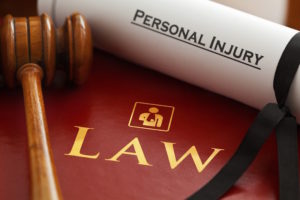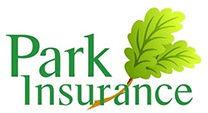Slips and trips in the workplace can cost your business money in compensation claims from employees and visitors as well as staff days off. They’re the cause of a whopping 31% of recorded workplace injuries, and they can be quite serious. To protect your business from this expense, and to meet your legal obligations, you need to take steps now to avoid accidents. Read our guide for businesses below to find out how to assess your risk, prevent injuries, and protect your business financially with robust insurance.
How much can slips and trips cost my business?
In today’s ‘no win, no fee’ environment, it’s easier than ever to claim compensation. Staff, customers, and visitors can sue your business if there is an accident, and they believe you were negligent.
Injuries from slips and trips can be severe. They vary from sprains and broken bones to chronic back pain and head trauma. The cost of legal fees and compensation rises depending on the type of injury.
Planning to prevent slips and trips
Every company needs to plan ahead and take steps to prevent injuries and mitigate the risk with insurance. If you run a factory, restaurant, or building site, the risk of potential injuries is higher than if you have a small office. That’s because there are likely to be more hazards where you work. But all businesses need to take time to identify all potential risks and prevent them.
 What are the leading causes of slips and trips in the workplace?
What are the leading causes of slips and trips in the workplace?
The primary causes of slips and trips that you’ll need to consider are:
- Wet floors.
- Uneven floors or surfaces.
- Cracked or broken surfaces and pavements.
- Unexpected obstacles.
- Poor lighting.
What every business needs to do
1) Assess your premises
The first thing to do is to think about the potential risks posed by your premises.
You need to think about
- Any buildings you own, including storerooms and sheds.
- Outside areas, including entrance steps and car parks.
Remember to consider accessibility by disabled staff or visitors as well as anyone with reduced mobility. If you employ staff with who do not have English as a first language, you’ll need to consider if that puts them at a higher risk. For example, if they are unable to read a warning sign. Make a note of any potential hazards you discover.
a) Wet or oily areas
Many slips and trips are the result of someone slipping on a wet or greasy floor.
Pay particular attention to areas that are prone to get wet or oily, for example:
- Kitchen areas.
- Anywhere else that liquid could be spilt. For example, if you sell food or liquids, areas where these items could be dropped and cause a slip hazard.
- Wet areas that are due to poor maintenance, for example, a leaking roof.
- Door entrances where rain and wet from outside can be trailed in.
There are simple steps you can take to avoid slips and trips from wet floors. You could use a doormat at an entrance to prevent water from being trodden in. If there is any liquid on the floor, make sure it is cleaned up as quickly as possible. Putting up a sign to warn staff and customers is also essential.
 b) Steps and uneven surfaces
b) Steps and uneven surfaces
Steps and uneven surfaces can also mean trips causing significant injuries. Regularly check floors and steps inside and outside your business to ensure they are in good repair and safe to use.
c) Obstacles and obstructions
Items left on the floor or trailing wires are another significant trip hazard in your business. Make sure nothing is left where people walk, even for a few minutes. It’s worth remembering that it’s vital always to keep fire escapes clear too.
2) Record
In most cases, you’ll need to record any potential hazards that you have found. This is required by law if you employ more than five people, but could be considered prudent for every business. You’ll need to keep this record safe in case you are asked to show it. If there is a claim, having a strong paper trail can help you to prove you were not negligent.
3) React
If you’ve identified a potential problem, the next step is to fix it. For example, if you’ve identified a loose step, get it fixed right away. If you have an area that will be prone to getting wet, for example, a kitchen, make sure you have cleaning up equipment close to hand, and that staff know how to use it.
Again, make sure you record your plans to deal with any potential problems and keep this record so you can show it if asked. If you can’t deal immediately with a problem, you may need to undertake additional steps to protect staff and visitors, for example, setting up a barrier.
4) Review
Things can change, so make sure you schedule a regular review of hazards to see if anything needs updating. You should also be aware of external factors that could mean you need to carry out an additional inspection. For example, if there is bad weather, such as freezing conditions, you may need to review your premises for hazards caused by ice.
 The law
The law
The Health and Safety Executive (HSE) says:
“The Health and Safety at Work Act 1974 requires employers to ensure the health and safety of all employees and anyone affected by their work, so far as is reasonably practicable, which means balancing the level of risk against the measures needed to control the risk in terms of money, time or trouble. This includes taking steps to control slip and trip risks.
Employees have a duty to take care of their own health and safety and that of others and must use any safety equipment provided.”
This means that you are responsible as an employer for taking steps to control slip and trip risks.
You’re also required by law to hold valid employer’s liability insurance. If you don’t, you can be fined.
Insurance: an essential part of your risk management plan
No matter how careful you are and how well you prepare, accidents can and do happen. Taking out appropriate employer’s liability and public liability insurance makes good business sense.
How much liability insurance cover do I need?
Most liability insurance covers £1million, £2million, or £5 million. The level of cover will depend on the size and type of business. A large employer in a higher risk industry should take out a higher level of cover. If you need more cover, it may be more cost-effective to consider Excess Layer Insurance. Speak to your insurance broker to find out more.
How to keep liability insurance costs down
- Stay claim-free. By taking steps to prevent accidents, you can reduce the risks and keep your premiums down.
- Look for a tailored deal. Not every business needs the same level of cover, so look for a bespoke deal to avoid unnecessary costs.
- Speak to an insurance broker that understands the unique risks faced by your business. As insurance is about risk, it pays to speak to someone who understands the real risks faced by your company.
- Consider Excess Layer Insurance for higher claim limits.
Trust Park Insurance to help your business
Park insurance is an independent insurance brokerage, which has been helping businesses like yours for 30 years. We work together with you to find the right insurance to protect your business financially. We have specialist teams with expertise in a wide range of businesses, from catering and construction to taxi firms and beauty salons. Call us on 0117 955 6835 or get a free quote today.

